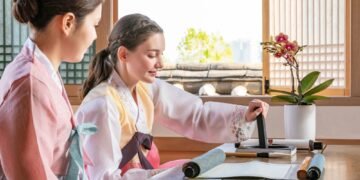Urban real estate is experiencing a major shift as sustainability becomes a priority for developers and tenants alike. Green design—incorporating eco-friendly practices and innovative architectural elements—has proven to be a powerful way to attract tenants and elevate property value. By reducing environmental impact while enhancing tenant satisfaction, green design is shaping the future of urban living and working spaces. Ballast Investments, a leading real estate investment firm managing a $2 billion portfolio, demonstrates this approach by prioritizing green design in its urban properties to meet the expectations of modern tenants and enhance community impact.
The Growing Demand for Sustainable Urban Spaces
As cities expand and populations grow, tenants are increasingly seeking properties that align with their sustainability values. This shift is driven by rising environmental awareness, higher energy costs and a desire for healthier, more comfortable living and working environments. Green buildings that integrate natural elements and energy-efficient systems have become a top choice for eco-conscious tenants and businesses looking to align with sustainability goals.
For property developers and owners, green design is more than a trend—it’s a competitive necessity. Eco-friendly features like smart lighting, green rooftops and efficient water systems differentiate properties in a crowded market, attracting tenants who value sustainability and long-term cost savings.
Additionally, green design enhances a property’s reputation, positioning it as a forward-thinking and socially responsible asset. These features also align with stricter environmental regulations, ensuring compliance while avoiding potential penalties. As tenants increasingly prioritize environmentally conscious living and working spaces, green design becomes a key driver of higher occupancy rates and tenant satisfaction.
Key Features of Green Design That Attract Tenants
Green design incorporates a range of features that enhance tenant appeal, from reducing utility costs to creating healthier indoor environments. Some of the most sought-after elements include:
Energy-Efficient Systems: Smart HVAC systems, LED lighting and renewable energy sources reduce energy consumption and utility bills, creating a win-win for tenants and property owners.
Natural Lighting and Ventilation: Maximizing natural light and airflow improves tenant comfort while reducing reliance on artificial lighting and climate control.
Sustainable Materials: Reclaimed wood, recycled steel and low-carbon concrete minimize environmental impact and enhance buildings’ aesthetics and durability.
Green Roofs and Vertical Gardens: These features provide urban tenants with access to nature, improve air quality, regulate temperature and create relaxing communal spaces.
Smart Technologies: IoT-enabled devices, automated lighting and energy monitoring systems give tenants more control over their spaces, enhancing convenience and efficiency.
Why Tenants Prefer Green Design
Tenants are drawn to green design for both practical and emotional reasons. These spaces offer tangible benefits like lower utility bills and improved indoor air quality, as well as the satisfaction of living or working in a space that aligns with their environmental values.
One of the biggest financial draws is the potential for cost savings. Energy-efficient buildings lower monthly expenses for heating, cooling and lighting, making them more appealing in markets with high living costs. Additionally, the healthier environments provided by green buildings—free of harmful pollutants and optimized for comfort—boost tenant well-being and productivity.
The green design also appeals to tenants on a deeper level. For younger generations and environmentally conscious businesses, occupying a green building is a way to actively contribute to sustainability efforts. This alignment with personal or organizational values creates a sense of pride and purpose, further increasing tenant loyalty.
Challenges in Implementing Green Design
While the benefits of green design are clear, implementing these features can pose challenges. High upfront costs, regulatory hurdles and tenant education are some of the barriers property developers and managers may face.
Initial Costs: Sustainable materials and technologies often require a higher upfront investment. However, these costs are offset by operational savings, tax incentives and increased tenant retention over time.
Regulatory Navigation: Urban zoning laws and building codes can complicate the integration of green features. Partnering with sustainability consultants and local authorities ensures compliance while maximizing the potential of green design.
Tenant Awareness: It is crucial to educate tenants about the benefits of green features. By effectively communicating the value of energy efficiency and sustainability, property managers can increase tenant appreciation and loyalty.
How Green Design Drives Retention
Beyond attracting tenants, green design enhances retention by delivering consistent value. Tenants are more likely to renew leases in buildings that offer lower operating costs, healthier environments and amenities that align with their values. Certification programs like LEED and ENERGY STAR also reassure tenants that the property meets high environmental and performance standards.
Greg MacDonald, CEO and Co-Founder of Ballast Investments, states, “Technology has become an indispensable tool for sustainable property management. The potential for ‘smart buildings’ to one day fully integrate energy management systems makes it an exciting time for investors focused on sustainable initiatives.”
Future Trends in Green Design for Urban Real Estate
Green design is rapidly evolving as technology and innovation drive new possibilities in urban real estate. Future trends include:
Net-Zero Energy Buildings: These buildings generate as much energy as they consume, making them highly attractive to tenants who prioritize environmental impact.
Biophilic Design: Incorporating natural elements such as greenery and water features creates spaces that enhance well-being and reduce stress, meeting the needs of urban tenants.
Adaptive Reuse: Repurposing older buildings into sustainable properties preserves historical value while minimizing waste, appealing to tenants who value unique and eco-friendly spaces.
Smart Cities Integration: Green buildings are increasingly becoming part of smart city initiatives, where data and technology optimize resource use, transportation and urban planning.
Green design is more than a trend in urban real estate—it’s a powerful strategy for attracting and retaining tenants while addressing environmental challenges. Features like energy efficiency, natural lighting and sustainable materials create spaces that are cost-effective, environmentally friendly and aligned with tenant values.
For industry leaders, integrating green design is about staying ahead in a competitive market while creating properties that positively impact communities and the planet. As tenants continue to prioritize sustainability, green design will remain a key factor in shaping the future of urban real estate.

















































